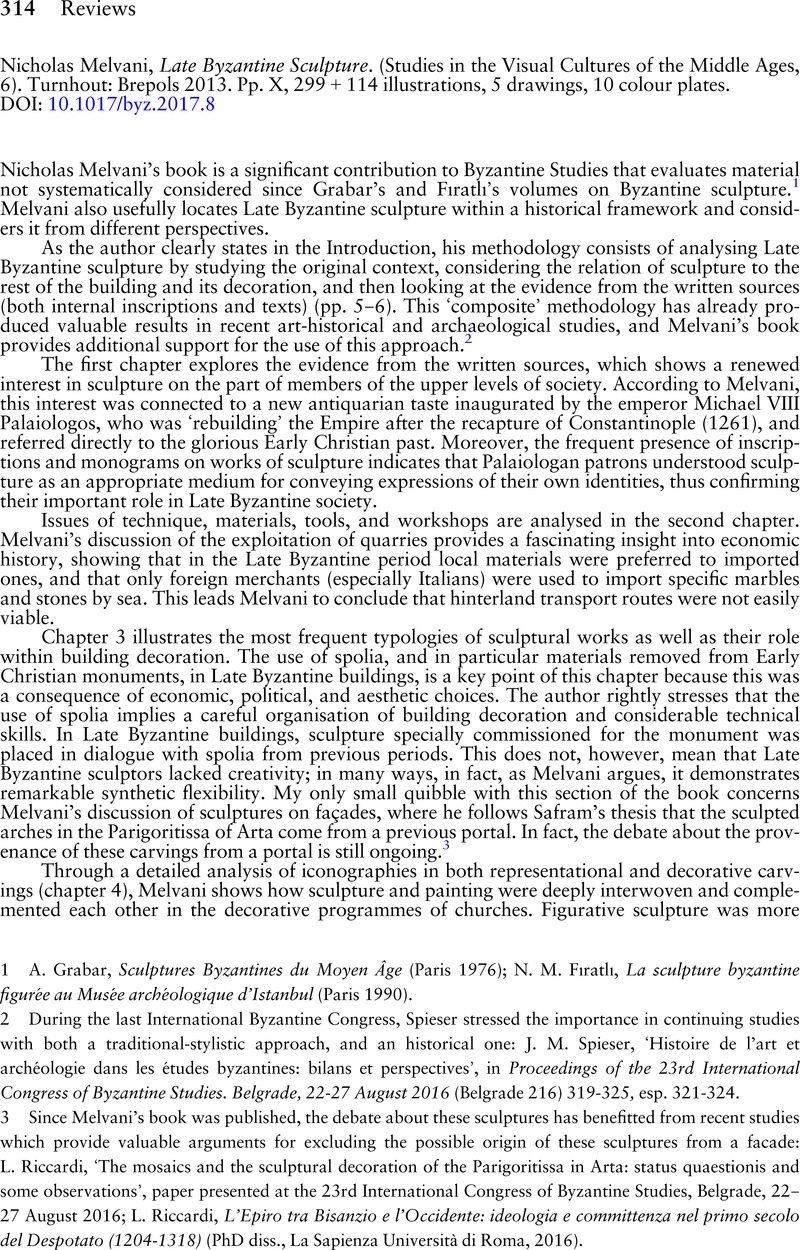No CrossRef data available.
Article contents
Nicholas Melvani , Late Byzantine Sculpture. (Studies in the Visual Cultures of the Middle Ages, 6). Turnhout: Brepols 2013. Pp. X, 299 + 114 illustrations, 5 drawings, 10 colour plates.
Review products
Published online by Cambridge University Press: 18 September 2017
Abstract

- Type
- Reviews
- Information
- Copyright
- Copyright © Centre for Byzantine, Ottoman and Modern Greek Studies, University of Birmingham, 2017
References
1 Grabar, A., Sculptures Byzantines du Moyen Âge (Paris 1976)Google Scholar; Fıratlı, N. M., La sculpture byzantine figurée au Musée archéologique d'Istanbul (Paris 1990)Google Scholar.
2 During the last International Byzantine Congress, Spieser stressed the importance in continuing studies with both a traditional-stylistic approach, and an historical one: J. M. Spieser, ‘Histoire de l'art et archéologie dans les études byzantines: bilans et perspectives’, in Proceedings of the 23rd International Congress of Byzantine Studies. Belgrade, 22-27 August 2016 (Belgrade 216) 319-325, esp. 321-324.
3 Since Melvani's book was published, the debate about these sculptures has benefitted from recent studies which provide valuable arguments for excluding the possible origin of these sculptures from a facade: L. Riccardi, ‘The mosaics and the sculptural decoration of the Parigoritissa in Arta: status quaestionis and some observations’, paper presented at the 23rd International Congress of Byzantine Studies, Belgrade, 22–27 August 2016; L. Riccardi, L'Epiro tra Bisanzio e l'Occidente: ideologia e committenza nel primo secolo del Despotato (1204-1318) (PhD diss., La Sapienza Università di Roma, 2016).


